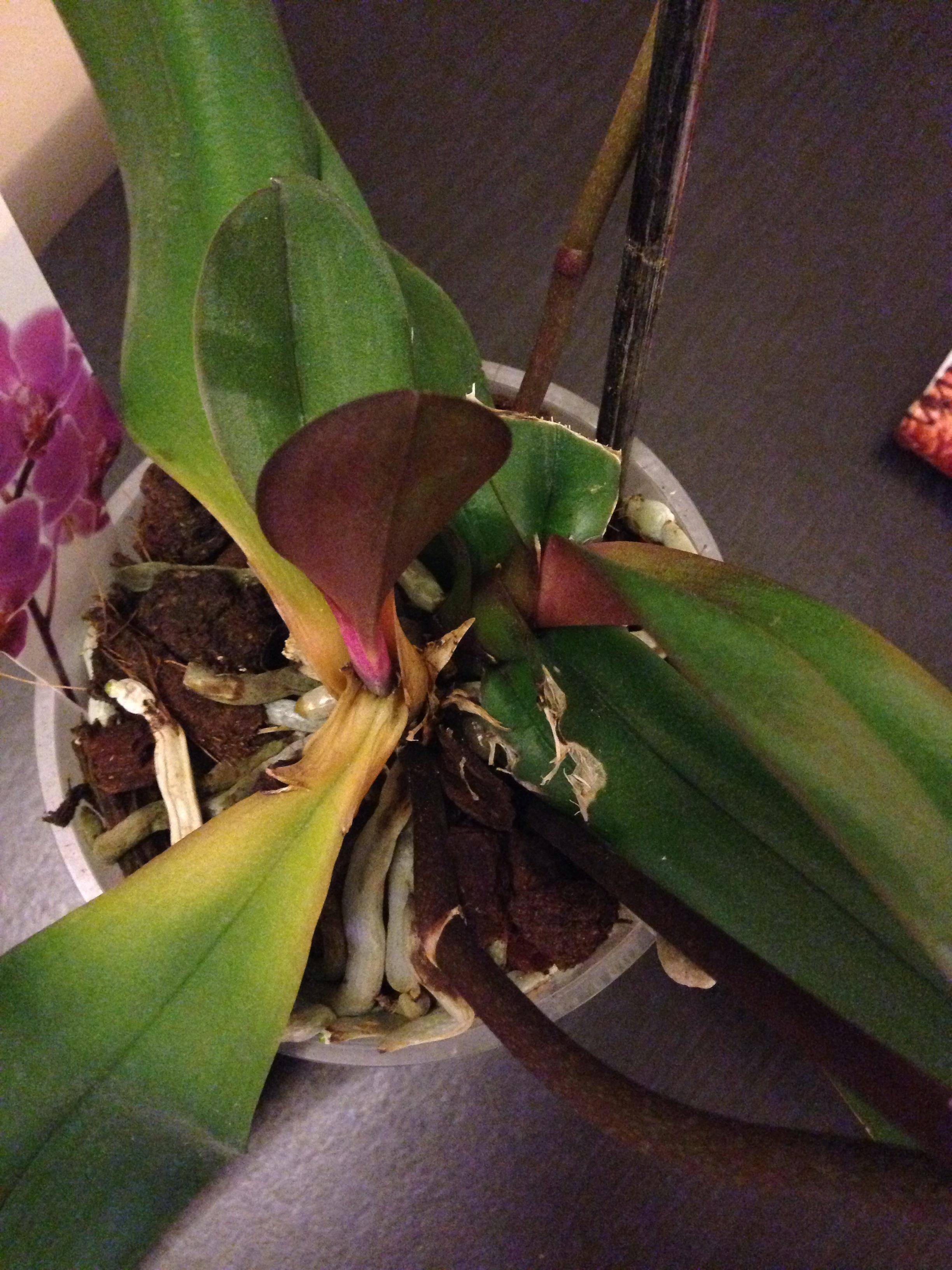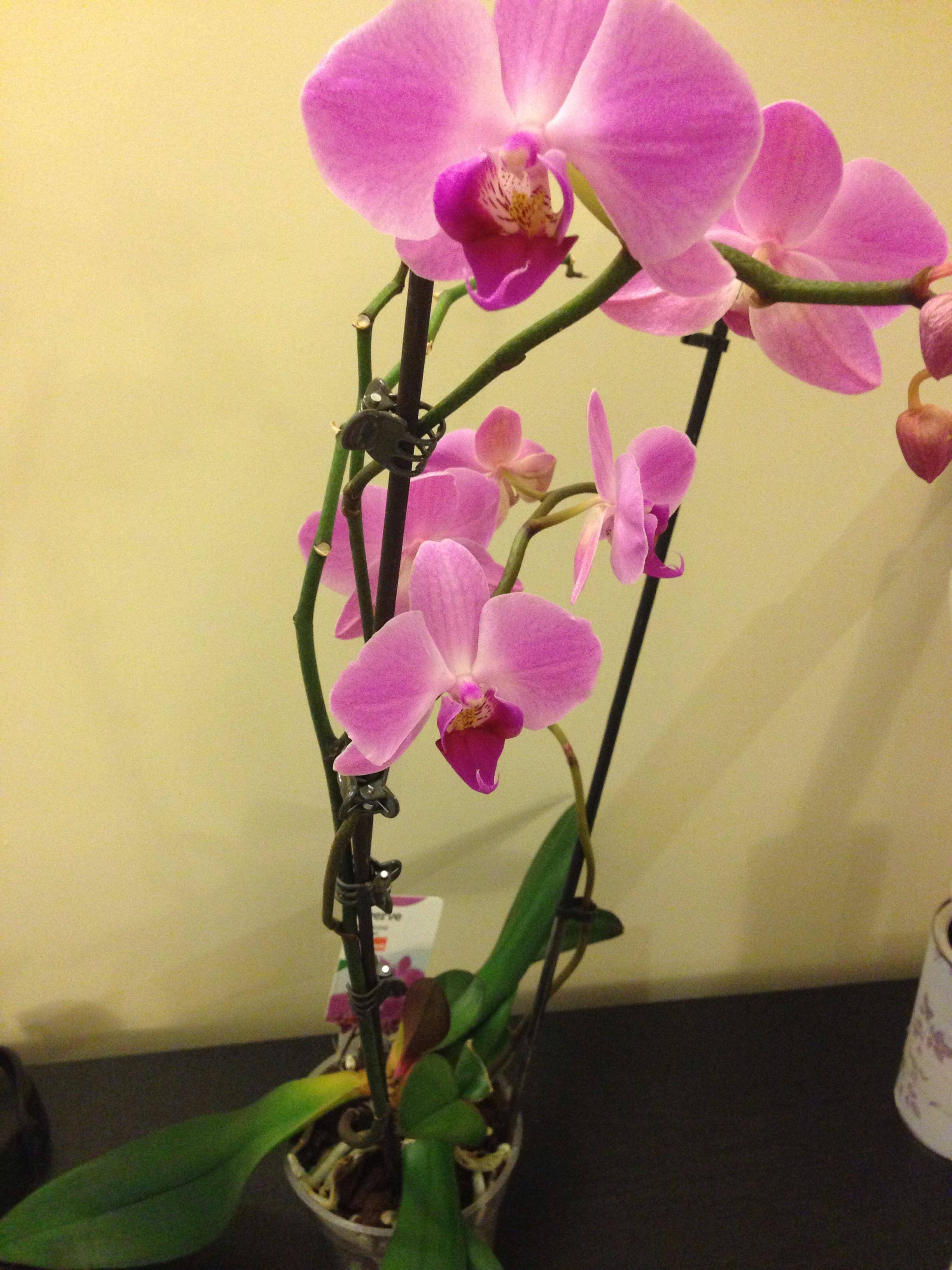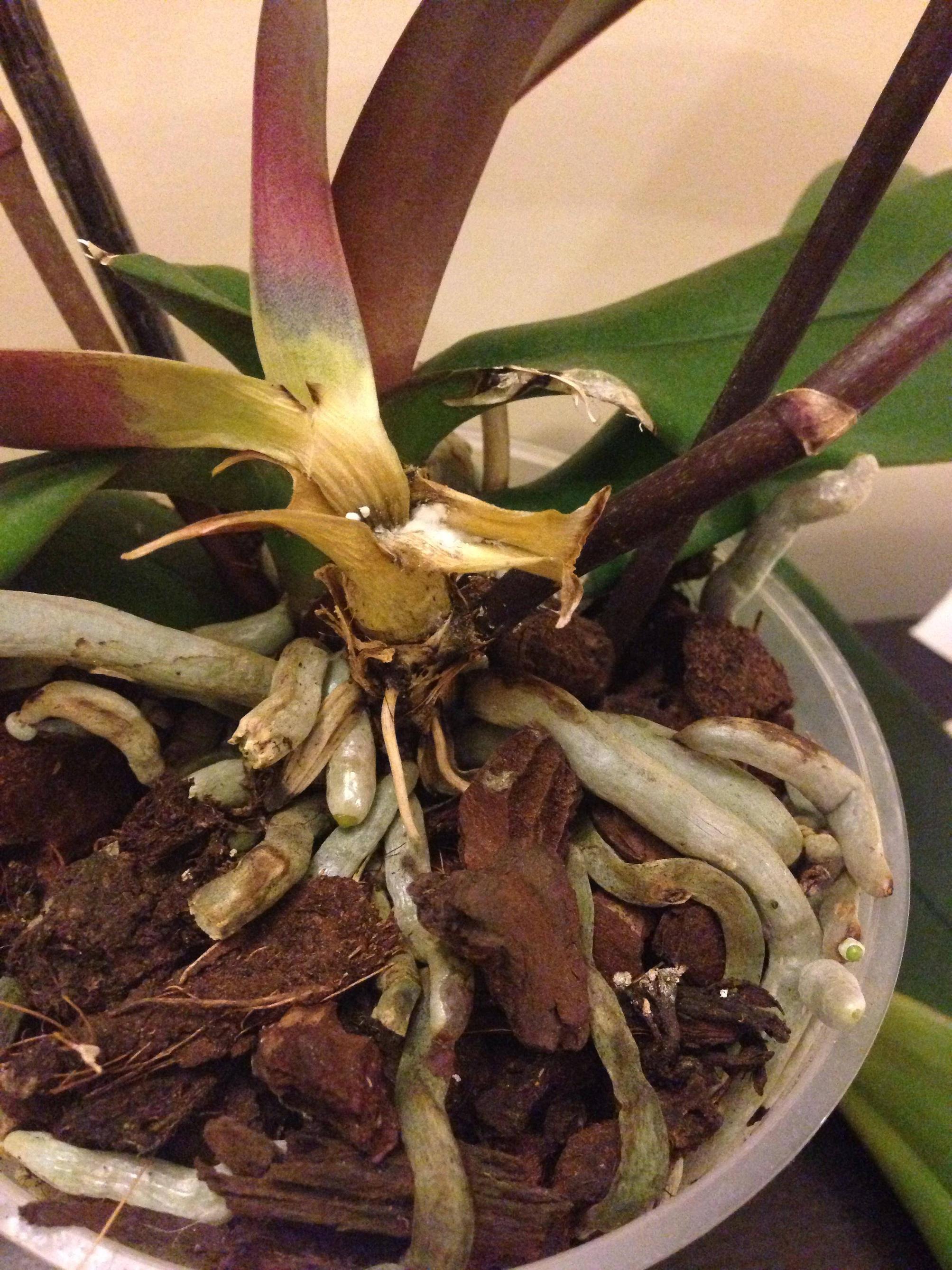I had previously asked a question about my Orchids (How Should I Take Care of These Two Phalaenopsis Orchids with Different Behaviors?) and I've read the other questions on the website, however I noticed something odd yesterday that's not discussed in the previous questions, so that's why I'm here again!
This Orchid has been doing really well, and it's full of flowers at the moment, but one of the leaves is almost falling off, turning yellow from the base. I feel the same thing is going to happen with the other leave. This is while the stem of flowers is growing from that certain 'bush'. What should I do?


UPDATE: As I'm waiting here for someone's help, that leave just came off yesterday, and the other one today. The small leaves also look unhealthy and moldy. The stem still seems pretty happy and the flowers are all in good order.
I keep looking closely, and that stem comes just below these leaves and that worries me, unless it's the other 'trunk' beside it that is supporting the flowers.
I feel the roots have changed a bit, too (those dark lines on the roots on the right of the leaves in the picture below).

